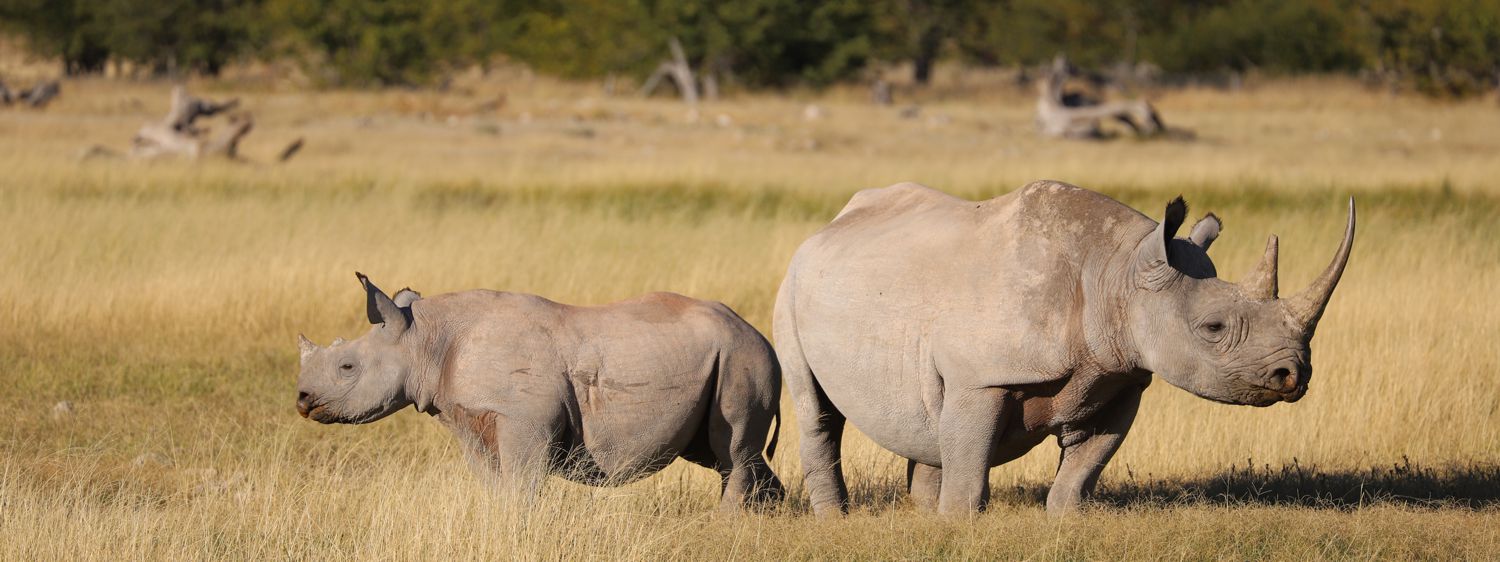The Black Rhinoceros (Diceros bicornis) is one of Africa’s most iconic and endangered large mammals. Despite its name, the black rhino isn’t truly black—its coloration ranges from brown to grey. What sets it apart from its cousin, the white rhino, is its pointed upper lip, perfectly adapted for grasping leaves and twigs from bushes and trees.
Behavior and Characteristics
Black rhinos are generally solitary and elusive, preferring to roam alone except during mating or when a mother is raising her calf. They are known for their keen sense of smell and hearing, which compensate for their relatively poor eyesight. Despite their bulky appearance, they can run at speeds of up to 55 km/h and are surprisingly agile.
These rhinos are browsers, feeding on a wide variety of vegetation including acacia, euphorbia, and other woody plants. They are also known for their territorial behavior, often marking their range with dung piles and urine.
Habitat and Distribution
Black rhinos inhabit a variety of environments, from savannas and grasslands to arid scrublands and bushlands. They are most commonly found in eastern and southern Africa, with key populations in countries like Namibia, Kenya, Tanzania, Zimbabwe, and South Africa.
Namibia, in particular, is home to the largest population of free-ranging black rhinos, especially in regions like Damaraland and Etosha National Park. These areas offer a unique opportunity for travelers to witness these magnificent creatures in their natural habitat, often against the backdrop of dramatic desert landscapes.
Conservation Status
Tragically, the black rhino is critically endangered, primarily due to poaching for its horn and habitat loss. However, thanks to intensive conservation efforts—including anti-poaching patrols, community-based wildlife management, and translocation programs—some populations are slowly recovering.



